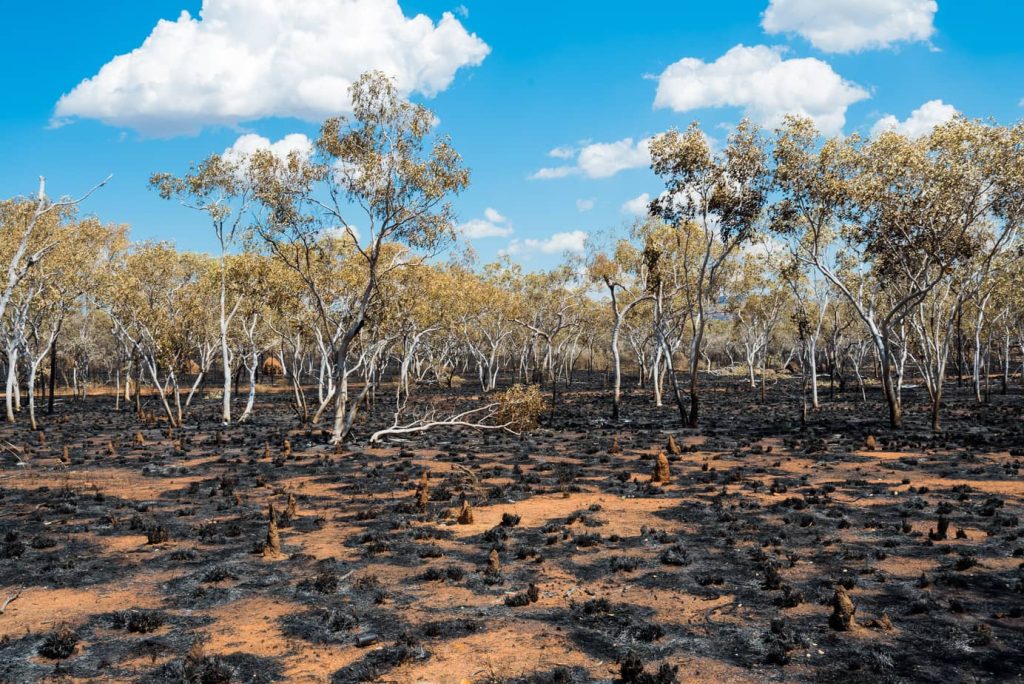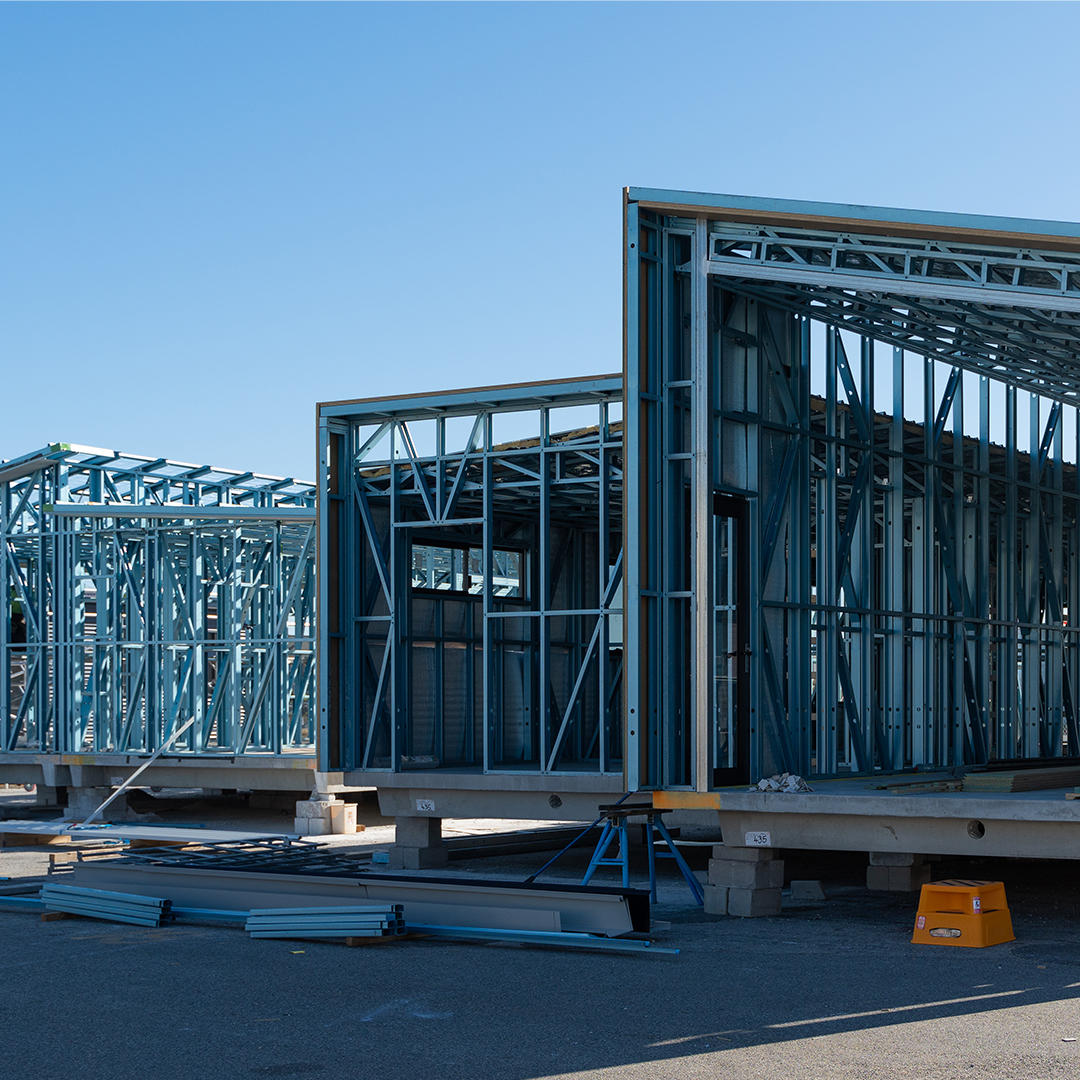What is a BAL rating?
The Bushfire Attack Level (BAL) evaluates the likely exposure of a building to bushfire hazards, such as embers, radiant heat, and direct flame contact.
BAL rating is vital when setting safety standards and construction requirements. These ensure your structure is safe should a bushfire occur.
The BAL rating system is determined by various factors based on the guidelines outlined in the Australian Standard AS 3959.
BAL Ratings Explained
| Bushfire Attack Level | Radiant Heat Exposure | Description | |||
|---|---|---|---|---|---|
| BAL LOW | Insignificant radiant heat exposure | This is the lowest BAL rating for areas prone to bushfires. BAL LOW indicates the possibility of an ember attack. | |||
| BAL 12.5 | 0 – 12.5kW/m2 radiant heat exposure | This rating signifies a low risk, showing a potential radiant heat flux exposure of up to 19kW per square meter. Additionally, wind-ignited embers and burning debris may lead to an ember attack. | |||
| BAL 19 | 19kW/m2 – 29kW/m2 radiant heat exposure | This rating denotes a moderate risk, with the same potential heat flux exposure as BAL 12.5 but a higher likelihood of exposure. No special requirements exist for the floors and subfloor. The construction requirements for the rest of the house remain the same, except for using 5mm safety glass instead of 4mm | |||
| BAL 29 | 19 to 29 kW per sq m | This rating means a high risk, with an increased likelihood of ember attack and potential radiant heat flux exposure up to 20kW per square meter. As a result, the building requirements rae more rigorous compared to lower ratings | |||
| BAL 40 | 29kW/m2 – 40kW/m2 radiant heat exposure | This rating shows a very high risk, with a substantially increased possibility of ember attack, some chance of direct flame exposure, and potential radiant heat flux exposure of up to 40kW per square meter. | |||
| BAL FZ | 40kW/m2 plus radiant heat exposure | This rating signifies an extremely high risk, indicating a significant threat of ember attack and extreme radiant heat exposure. Additionally, there is a potential for direct flame contact. The radiant heat flux exposure risk is equivalent to BAL 40. | |||
Factors that affect BAL ratings
A number of elements determine your BAL rating, including,
- Vegetation Type: Your BAL is greatly influenced by the variety of vegetation that is on or near your property. Examples of vegetation that will impact your rating include grasslands, shrublands, and forests.
- Proximity to Vegetation: A vital factor in determining BAL ratings is the location of nearby vegetation. The closer the building is to vegetation, the greater the risk of exposure to intense bushfires.
- Slope of the Land: Because bushfires travel faster uphill, the risks to properties situated on or close to slopes are generally higher than properties on flat land.
- Fire Weather Conditions: If you are in an area that is usually dry, hot, and windy, your chances of experiencing a significant bushfire are high. Other weather factors include humidity and wind speed.
- Building Design and Materials: Non-combustible building material significantly impacts your structure. You can have peace of mind knowing your portable building features components that can reduce its overall vulnerability,
- Surrounding Topography: The physical features of the area will impact your BAL. The fire’s behaviour is affected by various natural features. This includes hills, valleys, and bodies of water.
BAL Assessment
The goal of BAL assessments is to determine if any construction requirements are needed to protect homes in bushfire-prone areas. We use several design elements in our portable buildings to ensure you are well-protected. These include,
- Non-Combustible Materials: What we use to build our transportable structures is central to creating a safe space for you. Steel framing provides excellent support and helps your buildings resist fire. Additionally, using metal cladding and fire-resistant insulation will help deter bushfires.
- Roof Design: For structures with significant BAL, metal roofing and sealed edges reduce damage if embers land on your roof. Also, a roof designed to minimise the accumulation of debris will improve your safety.
- Ember Protection: Use ember guards on any openings or vents to keep embers from getting inside your structure and igniting an internal fire.
- Windows and Glazing: For your doors and windows, use toughened or laminated glass to reduce the chances of shattering. This type of glass will also hold up against radiant heat. You can add an extra layer of protection by installing bushfire shutters.
- Gaps and Openings Sealed: You should ensure closure of all gaps and openings to keep embers out; this includes doors, windows, and vents. A tight seal will keep embers out and lower the chances of internal ignition.
How do you know your BAL rating?
Finding out your BAL rating is not difficult, and it is worth your time to ensure the safety of your family and home. There are government resources available to help you estimate your BAL. However, the most accurate method is hiring an accredited bushfire consultant. This professional can assess your property and generate a report with your BAL rating and any recommended actions.
Can you reduce your BAL rating?
A number of approaches are recommended by fire safety experts to decrease your BAL rating. These methods include,
- Compliant Design and Layout- Minimise your risk by following a compliant layout. Place buildings far from areas thick with plants. Also, boundary zones should be created to help make sure the vegetation is maintained at a manageable level.
- Follow Your Local Government Regulations- These will give you a starting point to ensure proper plant life management, maintenance, and other elements of bushfire safety.
- Manage Your Vegetation- Be sure to prune trees and shrubs within your designated clearance zones. This is typically within 20 meters of the building.
- Make Firebreaks- Clear strips of land to establish and maintain firebreaks around your property.
Implementing these strategies can significantly lower your bushfire risk and potentially reduce your BAL rating.
Who determines the BAL rating?
The Bushfire Attack Level (BAL) rating system is determined by various factors based on the guidelines outlined in the Australian Standard AS 3959. Accredited bushfire consultants evaluate multiple factors, including vegetation type, slope, and distance from the vegetation to the building, to determine the BAL.
Conclusion
Safety is always a priority for us at Aussie Demountables. We devote ourselves to providing portable buildings that stand up over time all across Australia. If you would like to know more about BAL ratings or have general questions about demountables, feel free to reach out to us, no matter where you are located.


